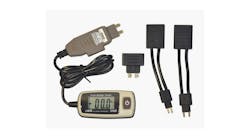API's Motor Oil Matters (MOM) Program helps oil change locations meet new motor oil labeling guidelines. The National Conference on Weights and Measures (NCWM) and the National Institute of Standards and Technology (NIST) recently published guidelines that would require oil change locations to provide information consumers need to make informed decisions on motor oil.
MOM can help oil change locations meet the new guidelines through API's new standard, API 1525A, Bulk Engine Oil Chain of Custody and Quality Documentation, and the MOM licensing program for motor oil distributors and oil change locations. The new guidelines and API's recently published standard simply provide what consumers should know: a bulk motor oil's brand, viscosity, and performance level.
The Weights and Measures guidelines have been published in NIST Handbook 130, Uniform Laws and Regulations in the Areas of Legal Metrology and Engine Fuel Quality.
The new provisions in the guidelines expand the scope of existing labeling requirements for packaged motor oils to include bulk motor oils installed from tanks, dispensers or other receptacles (for example, IBCs, kegs or drums).
The new guidelines may require adjustments to invoices or receipts and bulk motor oil container signage:
If a service location changes a car or truck's motor oil, the customer invoice or receipt would need to provide the following information:SAE viscosity of the motor oil installed (for example, SAE 5W-20 or 5W-30).
- Motor oil brand (specific motor oil brand installed).
- Service category (for example, API SN, SM, or CJ-4).
- Obsolete service category warning (for example, if API SF, "Not suitable for use in most gasoline powered automotive engines built after 1988.")
If an oil change location installs motor oil from bulk oil receptacles, dispensers or storage tanks, the dispensers or tanks would need to be labeled with the following information:
- SAE viscosity of the motor oil installed (for example, SAE 5W-20 or 5W-30).
- Service category (for example, API SN, SM, or CJ-4).
- Obsolete service category warning (for example, if API SF, "Not suitable for use in most gasoline powered automotive engines built after 1988")

